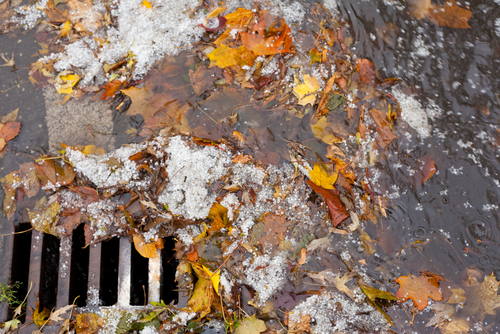 |
As the U.S. Environmental Protection Agency (EPA) works to finalize the 2013 MSGP, there are several changes proposed “to improve permit clarity, to address errors, and to make the permit more streamlined.” To begin, the 2013 MSGP changes will cover all of the 2008 permit’s geographic areas as well as adding facilities in Regions 7 and 8. In addition, the EPA has added new eligibility requirements so facilities must reverify that their discharges are eligible for coverage.
Another very important change is National Environmental Protection Act (NEPA) review for discharges subject to New Source Performance Standards (NSPS). EPA intends to prepare an Environmental Assessment (EA) to assess the impacts of a permit and subsequently, whether an Environmental Impact Statement (EIS) is necessary. This would relieve the NSPS discharger of having to make the same determination. In the previous permit, facilities constructed after their industry’s NSPS were required to document within their Stormwater Pollution Prevention Plan (SWPPP) either “No Significant Impact” under NEPA or to complete an EIS.
Not surprisingly, another change will be that dischargers electronically submit “NOIs, NOTs, annual reports, Discharge Monitoring Reports (DMRs)” and other materials. Onetime waivers will be available for facilities without broadband access or limitations on computer use/availability. However, such waivers will not apply to the entire term of the permit.
Need an answer fast? Relax. Our editors guarantee a personalized response to your questions within 3 business days. Take a free trial of Enviro.BLR.com and see what everyone is talking about. For a limited time, also receive a free 2013 EHS Salary Guide. Download Now
Concerning nonstormwater discharges, the EPA proposes to expand prohibitions to include wash waters contaminated with oil, grease, and other toxic or hazardous materials unless dry cleanup methods have been employed. The EPA also proposed specific effluent limits for power washing discharges resulting in particulates and other pollutants and requiring treatment controls before discharge unless treated via control measures defined in the permit.
The EPA is also addressing changes related to the Endangered Species Act, including a requirement to complete and submit a worksheet and to reassess eligibility using procedures provided in Appendix E of the new permit. Similarly, the EPA has revised eligibility with respect to the National Historic Preservation Act, including “a more detailed set of steps to help operators more conclusively determine whether historic properties are within the industrial facility’s ‘area of potential effect.’” The EPA anticipates this will require more interaction by facilities with historic preservation authorities. Again, eligibility criteria have changed and facilities must reassess their status using Appendix F of the new permit.
SWPPP requirements will also be affected as EPA proposes greater public access to these documents. The proposed permit would require permit applicants to provide EPA with a URL for the SWPPP or a list of specific SWPPP information on the NOI form.
Everything You Need for Environmental Compliance
Enviro.BLR.com puts everything you need at your fingertips, including practical RCRA, CAA, CWA, hazardous waste regulatory analysis and activity, news, and compliance tools. Try it at no cost or risk and get a FREE report.
Clarifications to effluent limits include “a greater level of specificity in order to make the requirements more clearly articulated, transparent and enforceable.” These clarifications apply to exposure minimization, good housekeeping, employee training, maintenance and spill prevention, and response procedures. Adequate corrective action is also addressed and includes modifications to deadlines and requiring that corrective actions take place the same day the event is discovered, and that equipment installation or modifications to eliminate the problem take place before the next storm event, if possible, and within 14 day of discovery.
New benchmark values for discharges to saline waters will be in addition to those in the 2008 MSGP and will be based on available acute ambient water quality criteria for arsenic, cadmium, copper, cyanide, lead, mercury, nickel, selenium, silver, and zinc. Industry sector-specific proposed changes for Metal Mining, Coal Mining, and Mineral Mining and Dressing will allow the inclusion of construction and exploration activities under the permit, and the EPA provides the Air Transportation sector with new effluent limitation guidelines for airport/airplane deicing.
The EPA also proposes that discharges to Comprehensive Environmental Response, Compensation, and Liability Act (CERCLA) sites will not be eligible for the new permit unless the applicable EPA Regional Office is notified and determines the facility is eligible. This determination will be based on measures taken to “ensure the discharge will not lead to recontamination of aquatic media at the CERCLA site.”
Annual reporting and routine inspection changes are also included that eliminate the comprehensive site assessment and require facilities conduct and submit four routine facility inspections and quarterly visual discharge assessments.
